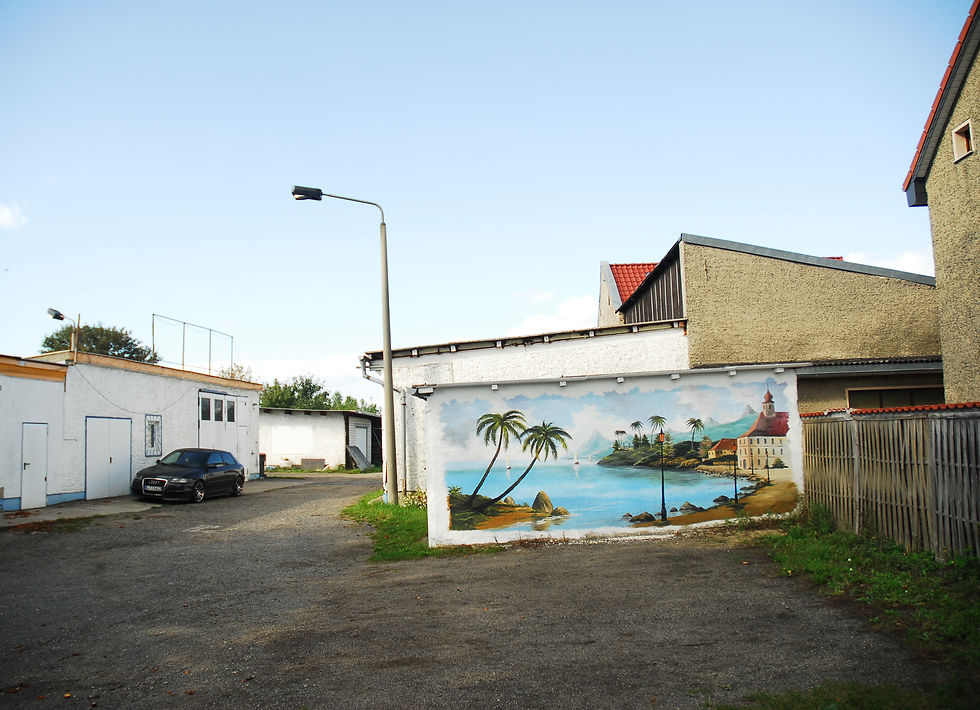

GRENZGANG BERLIN
Grenzgang Berlin est un projet mené dans le cadre du workshop Berlin Unlimited, entre le 28 septembre et le 11 octobre 2014. Le projet consiste en l'organisation de marches exploratoires collectives autour de Berlin, la constitution d'une exposition évolutive en lien avec ces marches au Zentrum für Kunst und Urbanistik et une présentation théorique sur le phénoménological walk dans le cadre de la session de conférences-débat intitulée Grounds.

Grenzgang Berlin is a metropolitan walk leading through peripheral and suburban areas around the German capital. This tour aims to gather the spatial context at the edge of the city, between the urban fabric and the countryside. The path allows a strollological contextualization of the different spatial objects encountered along the way. Different spatial fragments and atmospheres are linked and moulded into a mental continuity, thus building a suburban narrative.
Far from the museum's white cube, the oeuvre is not epitomized in the displayed finds or representations of the walk - they rather are mere documentary objects -, but is situated in the very experience of the walk itself. The bodily experience of the walk challenges both the spatial and perceptive experience we have of the Zwischenstadt, and the aesthetic experience itself. This latter shifts from the representational model of the museum to the direct contact with and within the world. The territory already is a work of art created through time and space by human action and nature (Alberto Magnaghi).
The walk bears witness to the explorative and collective dimension of walking. Far from its utilitarian aspects, the exploration stands as a tool for both a phenomenological and a critical approach. By their function and extension, the contemporary metropolitan fabric limits pedestrian activities to the city-centers. Long distances and mainly car mobility supporting infrastructures dominate the spatial environment of the city's edge. Pedestrian exploration becomes a challenging activity. The confrontation between the walker's body and the environment is a fertile but critical field where a collectively shared perception of the environment arises. Walking here opens up the possibility of being both a reading and a critique of space. The walker both gives a profile to his path and adapts it to a context. Such a dialectics is a way to test and to reinvent reality.
The bodily movement rescales the collective representation of the metropolitan territory and attaches it to personally experienced walkscapes. It contributes to the emergence of an "embodied knowledge" of peripheral spaces, thereby re-embedding the walker in a periphery-to-periphery-ground that modernity brushed aside.
The Grenzgang Berlin project draws on several practical walking experiences in France and a general theoretical input (such as Francesco Careri : Walkscapes - walking as an aesthetic experience, Lucius Burckhardt : Spaziergangswissenschaften; Tim Ingold : Lines. A brief history; Thomas Sieverts : Zwischenstadt; Christopher Tilley : Walking the Past and the Present; Thierry Davila : Marcher, Créer; Anne Volvey, The researcher’s body and the issue of aesthetics in geography; Alberto Magnaghi, Il progetto locale). Moreover, it is part of the possibly upcoming research project "Multiple Verortungen: Authentisierungsprozesse am Übergang von Stadt und Land" lead by Dr. Celina Kress.
Finally, Grenzgang Berlin is also a modest attempt to challenge contemporary tools of urban planning by grounding and anchoring them in experienced local contexts.








